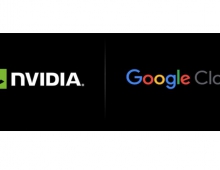
Google Extends Search To Email Boxes, Brings Siri Competitor To iOS App
Google is bringing an enhanced version of Voice Search, a Siri competitor, to its iOS app. The company ia also experimenting with including information from users' Gmail accounts in search results.
The moves are part of Google?s effort to make itself even more relevant to users and maintain its dominance in search.
In May Google launched the Knowledge Graph, a database of more than 500 million real-world people, places and things with 3.5 billion attributes and connections among them. Starting today, you'll see Knowledge Graph results across every English-speaking country in the world.
Google also also use this intelligence to help you find the right result more quickly when your search may have different meanings.
Finally, when you search for [california lighthouses], [hurricanes in 2008] or [famous female astronomers], we?ll show you a list of these things across the top of the page. And by combining our Knowledge Graph with the collective wisdom of the web, Google can even provide more subjective lists like [best action movies of the 2000s] or [things to do in paris].
Starting today, Google is also opening up a limited trial where you can sign up to get information from your Gmail right from the search box.
The experimental feature unveiled Wednesday will enable Google's search engine to mine the correspondence stored within a user's Gmail account for any data tied to a search request.
Such Gmail results will typically be shown to the right of the main results, though in some instances, the top of the search page will highlight an answer extracted directly from an email.
Blending email information into general search results could raise privacy worries.
Finally, Google combined its speech recognition expertise, understanding of language and the Knowledge Graph so that Voice Search can better interpret your questions and sometimes speak the answers back as full sentences. This will soon be available on your iPhone or iPad (iOS version 4.2+).
Voice Search on iOS will be able to find map information, weather results, and information on individual people and topics from the Google Knowledge Graph.
The enhanced version of Voice Search functions very much like its competitor, the Apple iPhone 4S' Siri, and arguably outperforms it.
You just need to tap the microphone icon and ask your question, the same way you'd ask a friend. For example, ask "What movies are playing this weekend?" and you'll see your words streamed back to you quickly as you speak.
Stronger Flash sandbox in Chrome
In related news, Google also today announced it had wrapped up work on a stronger Flash sandbox in the Windows version of Chrome, and would soon ship the same for its OS X browser.
With last week's Chrome Stable update (Chrome 21), Google took a step forward in security by bringing an even deeper level of sandbox protection to Adobe Flash Player on Windows.
A sandbox is an anti-exploit technology that isolates processes on the computer, preventing or at least hindering malware from letting hackers exploit an unpatched vulnerability, escalate privileges and push their attack code onto the machine.
Since 2010, Google has been working with Adobe to sandbox the Flash Player plug-in to protect users against common malware. Now, thanks to a new plug-in architecture, Flash on Windows is inside a sandbox that?s as strong as Chrome's native sandbox. And for the first time, Windows XP users have a sandboxed Flash, making them much safer online.
Chrome OS has had this deeper Flash sandboxing from the beginning, Linux has had it since Chrome?s last stable release, and Mac support is on the way.
In May Google launched the Knowledge Graph, a database of more than 500 million real-world people, places and things with 3.5 billion attributes and connections among them. Starting today, you'll see Knowledge Graph results across every English-speaking country in the world.
Google also also use this intelligence to help you find the right result more quickly when your search may have different meanings.
Finally, when you search for [california lighthouses], [hurricanes in 2008] or [famous female astronomers], we?ll show you a list of these things across the top of the page. And by combining our Knowledge Graph with the collective wisdom of the web, Google can even provide more subjective lists like [best action movies of the 2000s] or [things to do in paris].
Starting today, Google is also opening up a limited trial where you can sign up to get information from your Gmail right from the search box.
The experimental feature unveiled Wednesday will enable Google's search engine to mine the correspondence stored within a user's Gmail account for any data tied to a search request.
Such Gmail results will typically be shown to the right of the main results, though in some instances, the top of the search page will highlight an answer extracted directly from an email.
Blending email information into general search results could raise privacy worries.
Finally, Google combined its speech recognition expertise, understanding of language and the Knowledge Graph so that Voice Search can better interpret your questions and sometimes speak the answers back as full sentences. This will soon be available on your iPhone or iPad (iOS version 4.2+).
Voice Search on iOS will be able to find map information, weather results, and information on individual people and topics from the Google Knowledge Graph.
The enhanced version of Voice Search functions very much like its competitor, the Apple iPhone 4S' Siri, and arguably outperforms it.
You just need to tap the microphone icon and ask your question, the same way you'd ask a friend. For example, ask "What movies are playing this weekend?" and you'll see your words streamed back to you quickly as you speak.
Stronger Flash sandbox in Chrome
In related news, Google also today announced it had wrapped up work on a stronger Flash sandbox in the Windows version of Chrome, and would soon ship the same for its OS X browser.
With last week's Chrome Stable update (Chrome 21), Google took a step forward in security by bringing an even deeper level of sandbox protection to Adobe Flash Player on Windows.
A sandbox is an anti-exploit technology that isolates processes on the computer, preventing or at least hindering malware from letting hackers exploit an unpatched vulnerability, escalate privileges and push their attack code onto the machine.
Since 2010, Google has been working with Adobe to sandbox the Flash Player plug-in to protect users against common malware. Now, thanks to a new plug-in architecture, Flash on Windows is inside a sandbox that?s as strong as Chrome's native sandbox. And for the first time, Windows XP users have a sandboxed Flash, making them much safer online.
Chrome OS has had this deeper Flash sandboxing from the beginning, Linux has had it since Chrome?s last stable release, and Mac support is on the way.




















